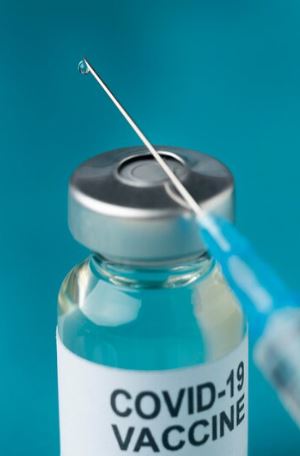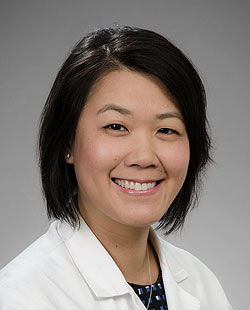By Mahlon Meyer
NORTHWEST ASIAN WEEKLY
Virtually every time a patient comes in, Crystal Wong, a board-certified family medicine physician and an associate medical director at University of Washington (UW) Medicine, carries out the same conversation.
“I’ve literally had hundreds of conversations about getting the new COVID-19 vaccine. It’s something that we offer to every single patient that walks through our doors at the clinic,” said Wong, comparing it to the conversation she has with patients about the flu shot.
In the end, the response boils down to one of three things.
“They either say they want the COVID vaccine, or they’re not interested, or they don’t know. If they don’t want it, I ask why, and then hear out their concerns,” she said.
In the end, only 10-20% of her patients opt out, after having “the conversation.”
Situation more dire than expected
But as Wong prepared last week for her next clinic, the conversation would become more urgent.
Wong had just received an urgent notification from the UW Medical Center.
The emergency room was full.
“Do what you can to keep people out of the ER,” it said.
The pandemic should have been over by now, that’s almost everyone’s expectation. And officially it is. That’s partially why vaccination rates are so low, even in a state that had among the highest vaccination rates in the country.
As of Jan. 14, only 17% of Washingtonians had been inoculated with the new formula adjusted to cope with mutations in SARS-CoV-2, the coronavirus that causes COVID-19, according to the Department of Health.
That is abysmally low compared with a rate of 76% of people in this state who’ve had at least one shot of the old formula.
“The pros and cons approach”
Wong, in an interview with Northwest Asian Weekly, said it is not typically concerns about the new formula that have prompted people to shy away from getting the new shot.
“If you’re a staunch non-believer in vaccines, it is very difficult for us to argue with you. We’ve been having this conversation for years now, and there’s not really a lot of new things coming up in the conversation.”
Rather, among her patients, it’s more an issue of “convenience,” for those who have the means and time to see a doctor, and barriers for those who don’t.
“It’s basically the pros and cons approach,” she said. “In addition, there is obviously less concern about COVID in the media.” Wong shared that many are seeing COVID-19 like “a ’normal cold’ as opposed to something that could be very deadly.”
 When people consider the cons of getting the COVID-19 vaccines, the biggest thing she hears is that the vaccine shots have side effects that make them sick. This, together with the idea that COVID-19 is not that serious, is making them not want to get it.
When people consider the cons of getting the COVID-19 vaccines, the biggest thing she hears is that the vaccine shots have side effects that make them sick. This, together with the idea that COVID-19 is not that serious, is making them not want to get it.
The conversation to clear the hesitancy
And that’s where the conversation comes in.
After she hears out the concerns of those who are inclined against the vaccine, she responds with nuance.
“I just say that from an individual perspective, you could be protecting yourself from something that hopefully is just a nuisance, but is a nuisance nonetheless,” she said.
She also raises the “bad outcomes,” such as potential hospitalization, death, or long COVID, that many people may not think about.
Finally, she adds, that by getting vaccinated, “From the community perspective, you are doing a public service by decreasing the spread.”
Other factors
For others, who may not have the means to see a doctor, lack health insurance, or have no time for an appointment, it’s a question of barriers.
“Everyone cares about their health. No one wants to get sick,” she said.
Another factor is the change in the way vaccines have been delivered. During the height of the pandemic, they were more accessible.
“The federal government put so much effort into making the COVID vaccine incredibly accessible when it was direly important that we got people vaccinated, and it’s [the] ease of access to anything that really impacts how many people will get it,” she said. “Now, we don’t have the same mass vaccine sites, we don’t have the same outreach to employers, or such things that happened early on in the pandemic or even mid pandemic or even late pandemic, and I think a lot of people feel they have to seek it out if they want the vaccine.”
The remedy?
The remedy? Make all health care, not just vaccines, more accessible.
“Access to all healthcare should be excellent, especially for people that have a lot of barriers,” she said. “And there are some things that it would be easier to facilitate easy access than other things and vaccines are a great example.”
There are resources that help bring up the level of accessibility for COVID-19 vaccines, such as the Bridge Access Program, Vaccines for Children Program, vaccine clinics, and support provided by local community organizations. So it is a matter of sharing this information with the community and making sure it reaches the ones that need to know about it.
On the other hand, not everything is possible.
“I do wish that we had more resources at our fingertips to do bigger public health outreach for things that are really common and really impactful.”
Sangfroid essential
One thing that Wong does not do is resort to scare tactics.
Although she’s had many patients and colleagues debilitated by long COVID—some having to quit their jobs and go on disability—she won’t exaggerate the risk to get people vaccinated using fear.
Mahlon can be reached at info@nwasianweekly.com.
Made possible in part by the Washington State Department of Health through a grant from the Centers for Disease Control and Prevention. This information does not necessarily reflect the official policies of the Washington State Department of Health or the Department of Health and Human Services.




